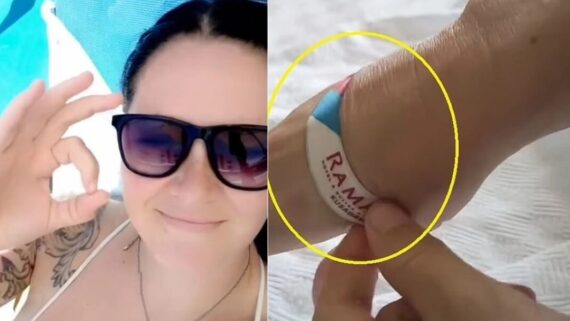When a patient is injured as a result of negligent care by a medical doctor, health care professional, or hospital, the circumstance is commonly referred to as “medical malpractice.” In medical malpractice cases, injuries can vary from minor to life-altering, and, if severe enough, can result in death. If you believe that you are a victim of medical malpractice, you may be able to file a medical malpractice lawsuit as a way to secure financial compensation for pain, suffering, emotional distress, cost of a new surgery, medical expenses, life care costs, lost work wages and seek a refund for the initial surgery. You can schedule a consultation to discuss the possibility of pursuing legal action and to learn more about our firm’s experience in handling similar cases to yours.
Medical Malpractice Law in Turkey
Medical malpractice in Turkey may occur in aesthetic medical tourism which is an economic source of treatment to improve the standard of living, improve the quality of life and improve physical appearance. In aesthetic medical tourism, treatment is more enjoyable than urgency. For this reason, those with high aesthetic medical preference are the ones with good economic status. The most preferred sections in the field are; hair transplantation, dental aesthetics, implant, eye aesthetics, breast aesthetics, tummy tuck surgery, nose aesthetics, ear aesthetics, facial bone aesthetics, liposuction, facelift, body aesthetics, botox, laser treatments can be listed as.
Injury to the patient
Medical malpractice is defined as any act or omission by a physician during treatment of a patient that deviates from accepted norms of practice in the medical community and causes an injury to the patient. Medical malpractice is a specific subset of tort law that deals with professional negligence.
Negligence
“Negligence” is generally defined as conduct that falls short of a standard; the most commonly used standard in tort law is that of a so-called “reasonable person.” The reasonable person standard is a legal fiction, created so the law can have a reference standard of reasoned conduct that a person in similar circumstances would do, or not do, in order to protect another person from a foreseeable risk of harm.
Plaintiff v. Defendant
The aggrieved patient who initiates the lawsuit before a court is called the plaintiff or complainant. By filing a lawsuit, the plaintiff seeks a legal remedy from the court. If the plaintiff is successful, the court will enter judgment for the plaintiff and issue a court order for damages. The party against whom the complaint is directed is the defendant; in the case of medical malpractice this party is the physician, medical laboratory, hospital, or professional organization to which the physician belongs. In litigation, cases are identified by citing the plaintiff first; thus a lawsuit is cited as “Plaintiff v. Defendant.”
Proving four elements
In Turkey, the patient alleging medical malpractice must generally prove four elements or legal requirements to make out a successful claim of medical malpractice. These elements include:
- the existence of a legal duty on the part of the doctor to provide care or treatment to the patient;
- a breach of this duty by a failure of the treating doctor to adhere to the standards of the profession;
- a causal relationship between such breach of duty and injury to the patient; and
- the existence of damages that flow from the injury such that the legal system can provide redress.
Legal duty
The first element is that a legal duty existed toward the patient; this duty comes into play whenever a professional relationship is established between the patient and health care provider. The general idea of a legal duty is that in civilized society, each person owes a duty of reasonable care to others. Extending this concept to the professional setting, where a doctor provides service to a patient, the doctor is said to owe a duty of reasonable professional care to the patient. In practical terms, this is the easiest element for the patient to establish, since such a duty is essentially assumed whenever a physician undertakes the care of a patient. A duty does not exist where no relationship is established between the doctor and patient.
Standard of care
To show that a breach of professional duty occurred, the patient must invoke the concept of standard of care. While the precise definition of “standard of care” can differ among jurisdictions and the concept can prove elusive in its application, the standard of care generally refers to that care which a reasonable, similarly situated professional would have provided to the patient. To establish breach of a standard of professional care, expert witness testimony becomes essential since a jury of lay persons cannot understand the nuances of medical care. Some breaches of the standard of care are so egregious that expert testimony is not needed; thus an operation on the wrong limb is an obvious breach of duty that speaks for itself.
Injury
A breach of the standard of care in itself, aside from being a potential quality of care concern for the medical practitioner or institution, is legally meaningless unless it causes an injury to the patient. This “so what?” question frames the third element of medical malpractice, which is causation. To prove this element, the injured plaintiff must show a direct relationship between the alleged misconduct and a subsequent injury. Alternatively, the patient can show a legally sufficient relationship between the breach of duty and the injury; this concept is referred to as proximate causation.
Damages
The fourth and final element of medical malpractice lawsuits is called damages. A medical malpractice claim generally concludes with a calculation of damages. Since monetary damages are easy to calculate and administer, courts hearing medical malpractice cases will determine money damages to compensate the injured patient. Punitive damages are very rare in medical malpractice cases, and are reserved by courts for especially egregious conduct that society has a particular interest in deterring; examples can include altering or deliberate destruction of medical records or sexual misconduct towards a patient. Absent a showing of damages, a plaintiff cannot maintain a cause of action for medical negligence.
Burden of proof
At trial, the plaintiff’s attorney has the burden of proving every element of the case by presenting information gathered during the pretrial discovery. The attorney must convince the court that it was more likely than not that the physician was negligent. Any assertions by the physician’s lawyer to the contrary are called defenses. Defenses serve to negate the evidence presented by the aggrieved plaintiff.
To show that medical negligence occurred, the aggrieved patient must show that a duty of professional care existed, that such duty was breached when the physician deviated from the standard of care, and as a result of such breach there was injury, and that such injury is measurable in damages that the court can use to calculate the redress owed to the plaintiff. These legal elements of a medical malpractice case must be proven by the patient suing the doctor, to the applicable standard of proof required by law.
Steps
If you suspect medical malpractice, your first move should be protecting your health and getting the proper care that you need.
After contacting another doctor, you should retrieve your medical records from the facility where you believe the malpractice occurred. If you suspect malpractice, be sure to monitor your health closely by taking daily notes or writing in a diary any symptoms you experience.
Finally, reach out to a medical malpractice law firm. An experienced and qualified personal injury attorney can help you figure out your next step forward.
 English
English Türkçe
Türkçe Français
Français Deutsch
Deutsch






Comments
No comments yet.